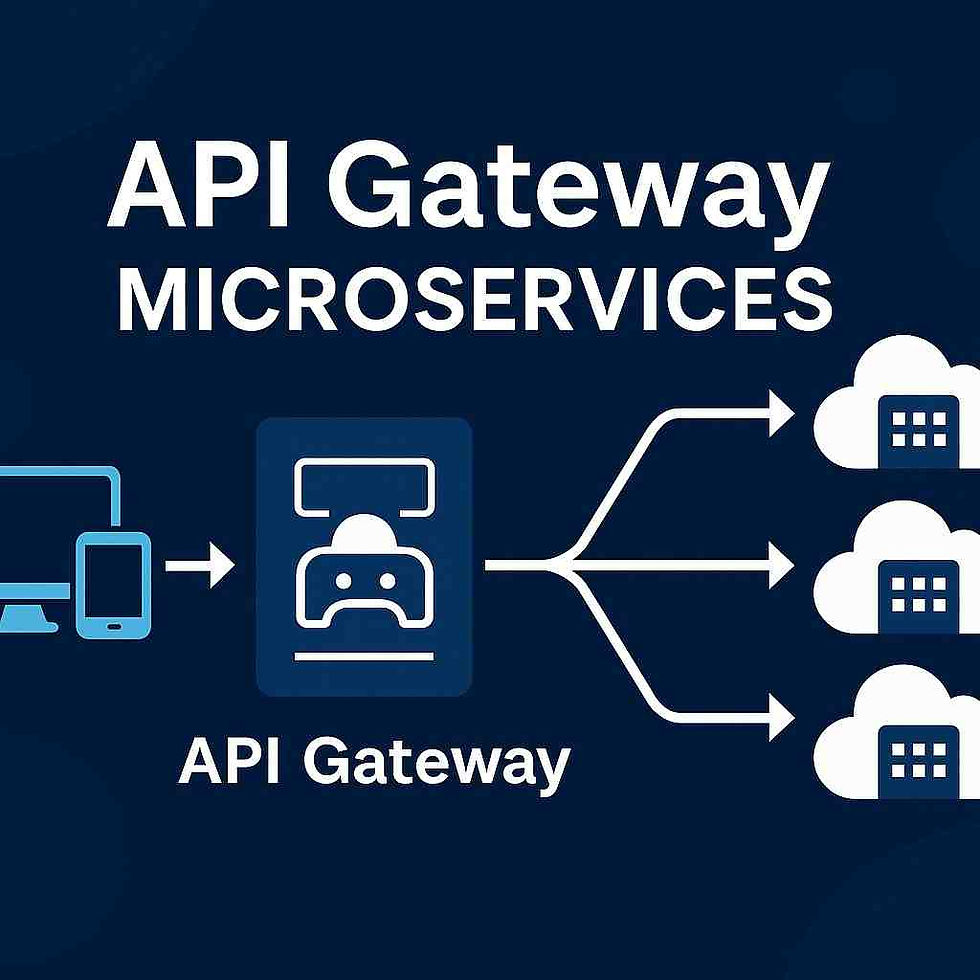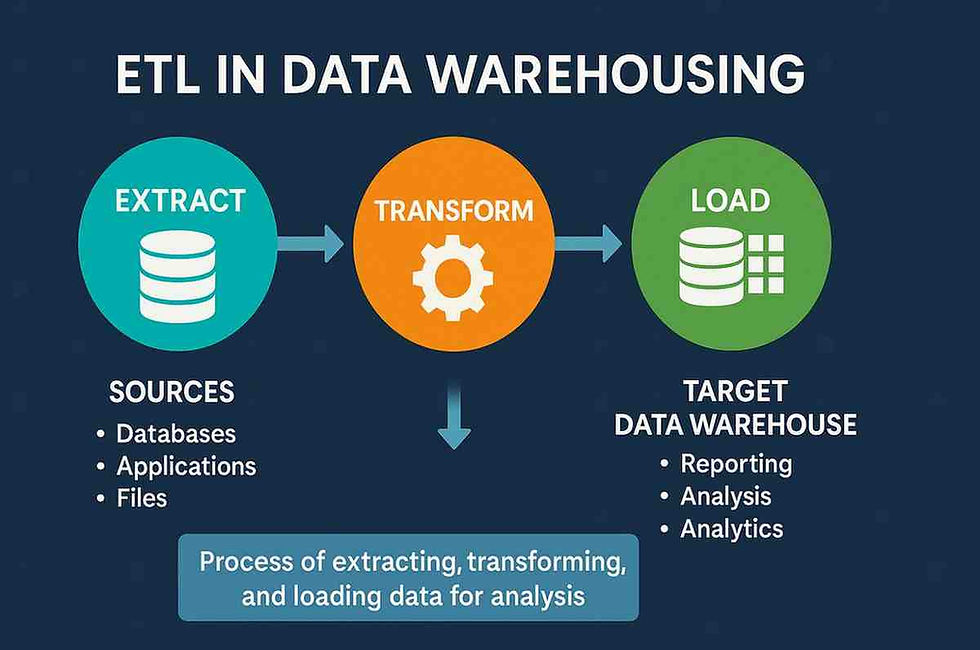qTest: Guide to Test Management Platform 2025 - Features & Pricing
- Gunashree RS
- Jul 16
- 7 min read
In today's fast-paced software development landscape, effective test management has become more crucial than ever. With the software testing market projected to reach USD 115.4 Bn in 2032, exhibiting a compound annual growth rate (CAGR) of 13% from 2025 to 2032, organizations are increasingly turning to sophisticated test management platforms. Enter qTest – a comprehensive solution that has carved out a significant position in the market.

What is qTest and Why Does It Matter?
qTest, developed by Tricentis, is the world's #1 software testing and test automation platform for unified test management across exploratory testing, manual testing, and more. This platform serves as a centralized hub where development and testing teams can manage their entire testing lifecycle efficiently.
The platform addresses a critical need in modern software development: the ability to track, manage, and execute tests seamlessly while maintaining complete traceability from requirements to defects. qTest has a market share of 9.08% in the test-management market, positioning it as a significant player in the competitive landscape.
How Does qTest Transform Your Testing Process?
Q: What makes qTest different from other test management tools?
A: qTest stands out through its unified approach to test management. Unlike traditional tools that focus on specific aspects of testing, qTest provides centralised Test Management: qTest keeps all your test cases and executions in one place, making it easier to stay organized. The platform's strength lies in its ability to bridge the gap between manual and automated testing seamlessly.
Q: How does qTest support both manual and automated testing?
A: One of qTest's standout features is its strong support for both manual and automated testing. This makes it an ideal choice for organizations looking to shift towards more automated testing processes while still maintaining the flexibility to conduct manual tests when needed. The platform integrates with popular automation frameworks like Selenium, TestNG, and Cucumber, making it easy to incorporate existing automation investments.
Key Features That Set qTest Apart
Comprehensive Test Case Management
qTest offers robust features for test case creation, management, execution, and reporting, covering all aspects of the testing lifecycle. Teams can create reusable test cases, organize them into logical hierarchies, and execute them across different environments and configurations.
Advanced Integration Capabilities
It integrates well with tools like JIRA, Jenkins, Selenium, and other automation frameworks. This extensive integration ecosystem allows teams to maintain their existing toolchain while adding qTest's powerful test management capabilities.
Real-Time Analytics and Reporting
Offers real-time analytics, customizable dashboards, and reporting capabilities to track metrics and ensure test coverage. These features enable teams to make data-driven decisions about their testing strategies and identify potential bottlenecks before they impact delivery timelines.
Understanding qTest's Architecture and Components
Q: What are the main components of qTest?
A: qTest consists of several integrated modules designed to work together:
qTest Manager - The core test case management platform
qTest Launch - Centralized automation execution hub
qTest Explorer - Test execution recording and documentation
qTest Sessions - Exploratory testing management
qTest Insights - Advanced analytics and reporting
Q: How does qTest ensure scalability for growing organizations?
A: qTest is designed to scale as your organization grows, with enterprise-grade functionality, flexibility, reporting, and administrative features. The platform supports thousands of concurrent users and can handle massive test suites without performance degradation.
Pricing and Investment Considerations
Q: What does qTest cost, and is it worth the investment?
A: qTest costs around $1000 per user, with an annual subscription, with the cost calculated and adjusted to the user and their services. While this might seem significant, the return on investment becomes apparent when considering the efficiency gains and reduced time-to-market.
The pricing model is tailored to organizational needs, with custom quotes available based on:
Number of users
Required features
Integration requirements
Support level needed
Cost-Benefit Analysis
Organizations typically see ROI through:
Reduced testing cycles - Up to 40% faster test execution
Improved defect detection - Earlier identification of issues
Enhanced team collaboration - Streamlined communication
Better compliance - Automated audit trails
Integration Success Stories and Real-World Applications
Q: How does qTest integrate with modern development pipelines?
A: qTest excels in CI/CD environments by providing seamless integration with popular tools. For example, when integrated with Jenkins, teams can automatically trigger test executions and receive immediate feedback on build quality.
The platform's API-first approach ensures that it can adapt to existing workflows rather than forcing teams to change their processes. This flexibility has made it popular among organizations transitioning to DevOps practices.
Visual Testing Integration
One notable integration success involves combining qTest with visual testing tools like Applitools. This combination enables teams to catch visual regression issues while maintaining complete traceability through qTest's management capabilities.
Best Practices for qTest Implementation
Q: What are the key factors for successful qTest deployment?
A: Successful qTest implementations typically follow these patterns:
Start with a pilot project - Choose a small, manageable project to demonstrate value
Establish clear governance - Define roles, responsibilities, and processes
Invest in training - Ensure team members understand the platform's capabilities
Configure for your workflow - Customize fields, workflows, and dashboards
Monitor and optimize - Use analytics to continuously improve processes
Common Implementation Challenges
Data migration - Moving from legacy systems
User adoption - Ensuring team buy-in
Process standardization - Aligning different team practices
Integration complexity - Connecting with existing tools
Market Position and Future Outlook
Q: How does qTest compare to competitors in 2025?
A: Tricentis qTest Review 2025: Is it still worth it? Suggests that qTest remains competitive through continuous innovation and feature enhancement. The platform's focus on unified test management gives it an edge over point solutions that only address specific testing needs.
Industry Trends Impacting qTest
AI-driven testing - Automated test case generation and execution
Shift-left testing - Earlier integration in development cycles
Cloud-native testing - Support for modern application architectures
Compliance automation - Automated audit and reporting capabilities
Security and Compliance Features
Q: How does qTest handle security and compliance requirements?
A: qTest provides security and compliance features essential for enterprise environments. The platform includes:
Role-based access control - Granular permission management
Audit trails - Complete tracking of all activities
Data encryption - Protection of sensitive test data
Compliance reporting - Automated generation of compliance reports
These features are particularly important for organizations in regulated industries like healthcare, finance, and aerospace.
Getting Started with qTest
Q: What's the best way to begin with qTest?
A: Organizations should start by:
Conducting a needs assessment - Identify specific testing challenges
Requesting a demo - See the platform in action
Planning the pilot - Select appropriate test cases and team members
Configuring the environment - Set up projects, users, and integrations
Training the team - Ensure proper adoption and usage
Success Metrics to Track
Test execution speed - Time to complete test cycles
Defect detection rate - Quality of testing processes
Team productivity - Efficiency improvements
Customer satisfaction - Impact on end-user experience
Frequently Asked Questions
Q: Can qTest handle both web and mobile application testing?
A: Yes, qTest supports comprehensive testing across web, mobile, and desktop applications. The platform's flexibility allows teams to manage test cases for any application type within a single interface.
Q: Does qTest support API testing?
A: While qTest doesn't directly execute API tests, it integrates seamlessly with popular API testing tools like Postman, SoapUI, and RestAssured, allowing teams to manage API test cases alongside other testing activities.
Q: How does qTest handle test data management?
A: qTest provides basic test data management capabilities and integrates with specialized test data management tools for more complex scenarios. Teams can link test cases to specific data sets and track data usage across test executions.
Q: Is qTest suitable for small teams or just enterprises?
A: qTest offers solutions for teams of all sizes, though its pricing model and feature set are generally more suitable for medium to large organizations with complex testing requirements.
Q: What kind of support does Tricentis provide for qTest?
A: Tricentis offers comprehensive support, including documentation, training materials, community forums, and direct technical support based on your subscription level.
Q: Can qTest be deployed on-premises?
A: Yes, qTest is available in both cloud and on-premises deployment options, allowing organizations to choose based on their security and compliance requirements.
Conclusion
qTest represents a mature, comprehensive solution for organizations seeking to modernize their test management practices. With its unified approach to manual and automated testing, extensive integration capabilities, and enterprise-grade features, it addresses the complex needs of modern software development teams.
The platform's significant market share and continued innovation suggest it will remain a relevant choice for organizations looking to improve their testing efficiency and quality. While the investment may be substantial, the potential returns in terms of faster delivery, improved quality, and better team collaboration make qTest a compelling option for many organizations.
As the software testing landscape continues to evolve, qTest's commitment to integration and innovation positions it well to adapt to emerging trends and technologies. For organizations ready to invest in a comprehensive test management platform, qTest offers a robust foundation for building efficient, scalable testing practices.
Key Takeaways
• qTest holds a 9.08% market share in the test management space, making it a significant player in the industry
• The platform costs approximately $1000 per user annually, with custom pricing based on organizational needs
• qTest provides unified support for both manual and automated testing workflows
• Integration capabilities extend to popular tools like JIRA, Jenkins, Selenium, and various automation frameworks
• The software testing market is projected to reach $115.4 billion by 2032, indicating strong growth potential
• qTest offers enterprise-grade scalability with real-time analytics and customizable dashboards
• The platform includes comprehensive security and compliance features for regulated industries
• Organizations typically see ROI through reduced testing cycles and improved defect detection
• Cloud and on-premises deployment options are available to meet different organizational requirements
• Success depends on proper implementation planning, team training, and process standardization




INDOVIP138
indovip138
indovip138
indovip138
indovip138
indovip138
indovip138
indovip138
indovip138
indovip138
indovip138
indovip138
indovip138
indovip138
indovip138
indovip138
indovip138
indovip138
indovip138
indovip138
indovip138
indovip138
indovip138
indovip138
indovip138
indovip138
indovip138
indovip138
indovip138
indovip138
indovip138
indovip138
indovip138
indovip138
indovip138
indovip138
indovip138
indovip138
indovip138
indovip138
indovip138
indovip138
indovip138
indovip138
indovip138
Link INDOVIP138
indovip138
indovip138
indovip138
indovip138
indovip138
indovip138
indovip138
indovip138
indovip138
indovip138
indovip138
indovip138
indovip138
indovip138
indovip138
indovip138
indovip138
indovip138
indovip138
indovip138
indovip138
indovip138
indovip138
indovip138
indovip138
indovip138
indovip138
indovip138
indovip138
indovip138
indovip138
indovip138
ChatGPT сказал:
qTest is een krachtige testbeheeroplossing in 2025, ideaal voor teams die efficiëntie en overzicht in hun QA-processen willen vergroten. Bruno Casino https://brunocasino.mobi/ biedt Nederlandse spelers een spannende spelervaring met een uitgebreid aanbod aan slots en live spellen. Dankzij zijn snelle uitbetalingen en royale bonussen onderscheidt dit casino zich als een betrouwbare keuze in de online gokwereld.